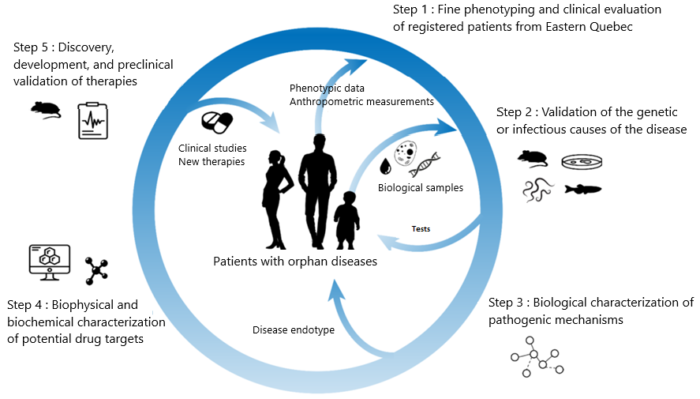

Welcome to CERMO-FC
The Center of Excellence in Research on Orphan Diseases – Fondation Courtois (CERMO-FC) founded at UQAM brings together more than 60 researchers across Quebec and internationally. The Center’s mission is to develop and deepen knowledge on orphan diseases through fundamental and applied research, and in doing so, to identify therapeutic targets to improve patient care and follow-up. and their quality of life. At the same time, CERMO-FC is preparing the next generation in this field through education and training.
Be actor in sciences research | Orphan diseases

What is an orphan disease?
An orphan disease is a pathology that does not benefit from effective therapies, mainly due to lack of knowledge. These diseases are generally rare, each affecting less than 1 in 2,000 people. The small number of cases seen in the clinic also complicates the diagnosis. These rare / orphan diseases are more than 7,000 worldwide, 80% of which are genetic. Other causes include infections or poisoning. Most of these diseases are fatal and around 75% affect children. According to the Regroupement Québécois des Maladies Orphelines (RQMO), nearly one in 20 people is suffering from or carrying a rare disease in Quebec, approximately 500,000 Quebecers. While the identification of the genes involved in rare diseases benefits greatly from the Human Genome project, much research is still needed to understand pathogenic mechanisms and develop therapies.
Why a zebra?
The zebra became the symbol of rare diseases in the 1940s, following a reflection by the doctor Theodore Woodward to his students:
“When you hear the sound of hooves behind you, think of horses, not zebras.”
This metaphor was intended to teach that when diagnosing a disease, physicians should first think about common diseases. On the contrary, orphan diseases are more present than we think in our society. Thus, the zebra has become the symbol of rare diseases; he reminds us that they should not be forgotten.
The International Rare Disease Awareness Day takes place on February 29 because of its rarity, as it happens every 4 years. The day is moved to February 28 for non-leap years.




